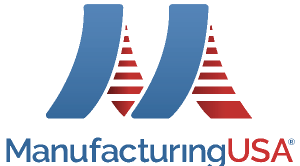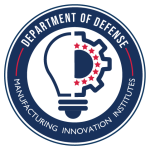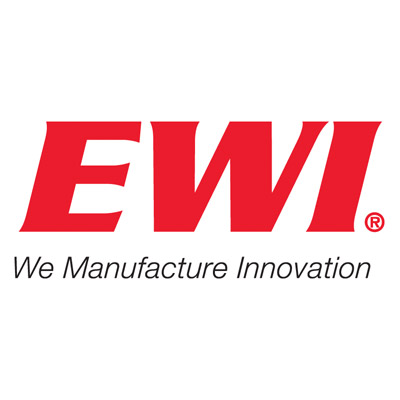


Top: Workflow required for digital twin model and post-processor development along with a Genesis System DED digital twin model. Bottom: Fixture plate with build platform and successful calibration build.
Problem
Directed energy deposition (DED) system software requires developer skills to design digital twin system models, code computer-aided manufacturing (CAM) software post-processors, build plan solver software, and transition simulation solutions for metal additive manufacturing (MAM). Advanced DED software is needed to enable large-format MAM using arc, laser, or electron beam welding deposition processes.
The Army Ground Vehicle Systems Center (GVSC) needs to develop a DED procedure model database for a wide range of structural alloys and build applications. In addition, sensors and control technologies are needed for lights-out thermal, dimensional, and quality management.
Objective
The objective of this project was to enable MAM with affordable pre-engineered robotic welding systems via software integration development and to support ongoing development to mature large-format robotic DED for Army GVSC applications.
Technical Approach
Edison Welding Institute (EWI) converted the Genesis robotic welding system at Rock Island Arsenal – Joint Manufacturing & Technology Center (RIA – JMTC) into a DED AM system using PowerMill CAM software. The computer-aided design (CAD) models for all robot cell components were developed to design and program a functional digital twin of the physical robot cell using PowerMill simulation tools. EWI established critical coordinates, work planes, and component positions of the digital twin system and transitioned the data to the JMTC.
EWI calibrated the Genesis Fanuc DED system digital twin and performed several tests to calibrate the digital twin to the physical system. The team developed and transitioned gas metal arc pulse DED wall and block procedures for two commonly used arc welding electrodes: MIL-100S-1 and MIL-120S-1. A standard qualified build (SQB) using MIL-100S-1 electrode was completed using the full-scale single-sided non-integrated build platform.
Accomplishments
EWI converted a Fanuc six-axis robot into a DED 3D printer and utilized PowerMill software to develop a Genesis System DED digital twin to create a MAM cell at RIA. A fixture plate with a build platform was fabricated with three axes of movement, giving the complete system nine axes of movement. The Genesis system DED digital twin was calibrated to within +/- 0.05 mm of the physical system and a circle and start pattern calibration build was successful. Finally, wall and block parametric models for MIL-100S-1 and MIL-120S-1 wire consumables were created. This allowed the team to remove two tensile samples from each to establish preliminary tensile properties in as-deposited conditions for future testing. The MAM cell and digital twin move RIA closer to establishing DED-applied research test-bed capabilities.
Project Participants
Project Principal

Other Project Participants
- NCDMM/America Makes
Public Participants
- U.S. Department of Defense
- Army Ground Vehicle Systems Center (GVSC)
